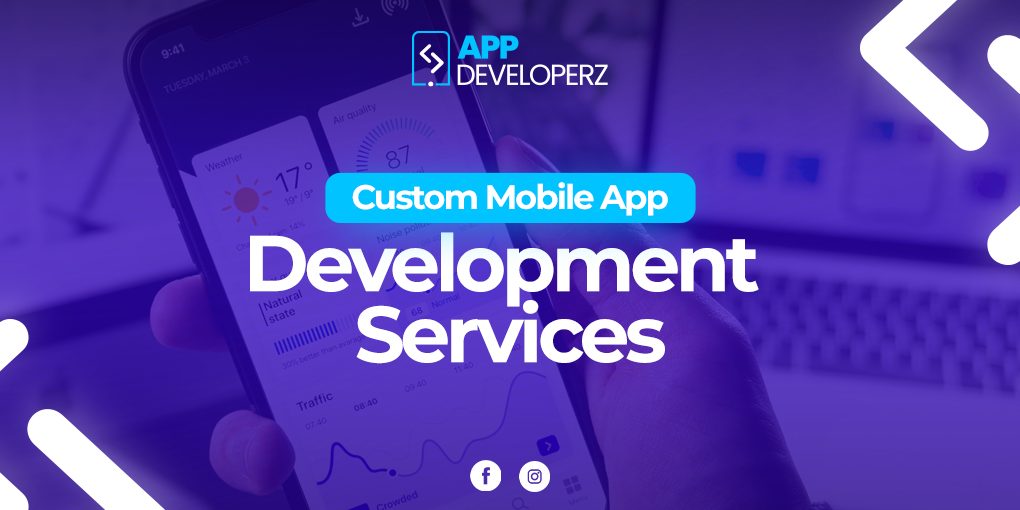Accessibility in Mobile App Development Services: Ensuring Inclusivity
The significance of mobile apps has increased substantially in a world where cellphones have become an extension of ourselves. Mobile apps have become an essential part of our daily lives, whether it's for shopping, communication, entertainment, or productivity. Still, not everyone has the same level of comfort with using these apps. This is where the idea of accessibility in custom mobile app development services comes in.
For what reasons is it crucial that bespoke custom mobile app development services be accessible? By accessibility in mobile app development, we mean making sure that all users, including those with physical or mental impairments, can fully take advantage of the app's features. In many nations, this kind of acceptance is mandated by law as well as a moral imperative.
Custom mobile app development services need to consider accessibility as a crucial aspect. This is because accessibility plays a significant role in ensuring that the app can be used by a wide range of users, including those with disabilities or impairments. By taking accessibility into account, developers can make the app more inclusive and user-friendly, allowing everyone to have equal access to its features and functionalities. Additionally, considering accessibility during the development process can also help businesses comply with accessibility standards and regulations, thereby avoiding potential legal issues. Overall, prioritizing accessibility in custom mobile app development services is essential for:
- Expanding the user base of an app by making it accessible is beneficial as it allows the app to reach a wider audience. This, in turn, can lead to a larger user base and potentially increased revenue.
- Failing to provide accessibility in your app could lead to potential lawsuits and other legal issues. It is important to ensure that your app complies with legal requirements to avoid any legal consequences.
- One of the key advantages of accessible design is that it enhances the user experience. It is important to note that accessible design not only benefits individuals with disabilities, but also has positive impacts on all users. Having an intuitive interface is crucial for enhancing the user-friendliness of an app.
- Prioritizing inclusivity can have a positive impact on a business's brand reputation. Customers and the public tend to view businesses that prioritize inclusivity in a more positive light.
- Supporting corporate social responsibility is an important aspect of demonstrating a commitment to inclusivity. This aligns with the values of corporate social responsibility, which prioritize the well-being and inclusivity of all individuals.
Now that we know why it's important to prioritize accessibility when creating mobile apps, we can dive into the best guidelines for doing so:
- Accessibility Testing
Accessibility testing is an integral part of making a mobile app usable by everyone. The spectrum of impairments, from the visual to the auditory to the motor to the cognitive, should all be tested for. To find any problems that could prevent accessibility, you should use both human and automated testing technologies.
- Alternative Text for Images
It's common for mobile app images to convey crucial information. Include alt text descriptions for all photos to ensure this content is accessible to those with visual impairments. Users who are visually impaired can still access the information by using screen readers.
- Voice Commands and Gestures
Think about adding support for gestures and voice commands to your program. Users who have trouble using standard touch interfaces can benefit immensely from these additions.
- Consistent and Navigable Interface
Users will have an easier time navigating your software if the style and layout are consistent throughout. Menus, buttons, and other interactive components that are easy to understand and use are appreciated.
- Adjustable Text Sizes and Contrast
Incorporate options for changing the app's font size and color contrast for individual users. Some people may need different defaults because of color blindness or other visual problems.
- Accessible Multimedia
Make sure there are captions or transcripts available for all videos and audio. Users who have hearing impairments will find this feature useful.
- User Feedback Mechanisms
Build in ways for users to provide feedback on your app. By letting users report accessibility concerns, your team can fix them and make the app more accessible for everyone.
Conclusion:
Innovative solutions that appeal to a wide range of users can be developed with the help of custom mobile app development services. You may meet legal standards and create a more welcoming, user-friendly, and socially responsible app by incorporating accessibility and inclusivity into your custom mobile app development services.
By doing this, you can improve the lives of many people, as well as open doors and boost your brand's reputation. Accessibility is not a feature; rather, it is a way of thinking that must permeate every aspect of your custom mobile app development services.










